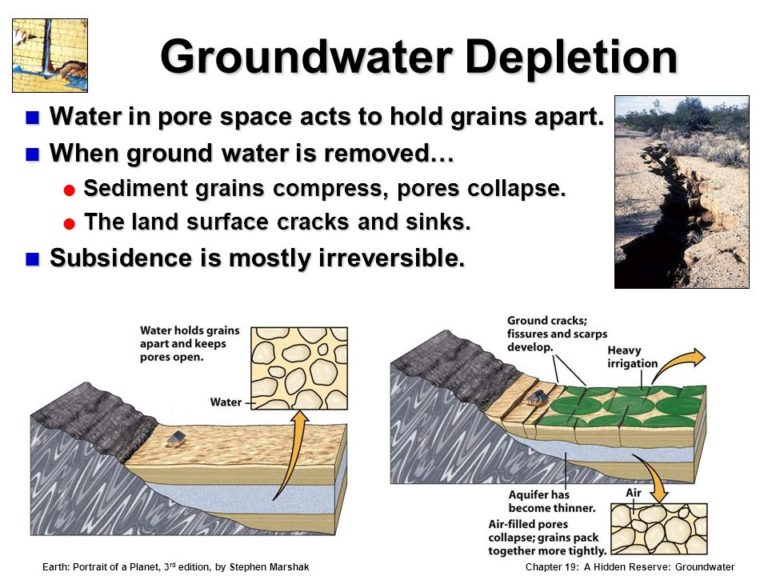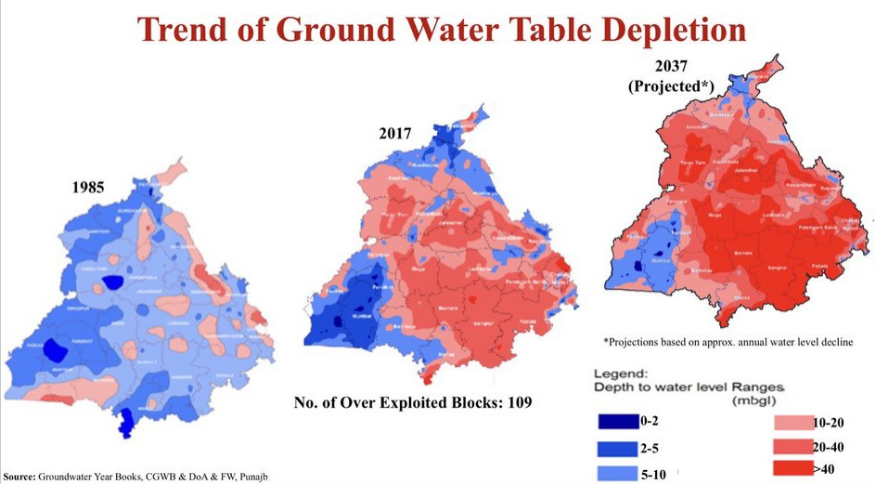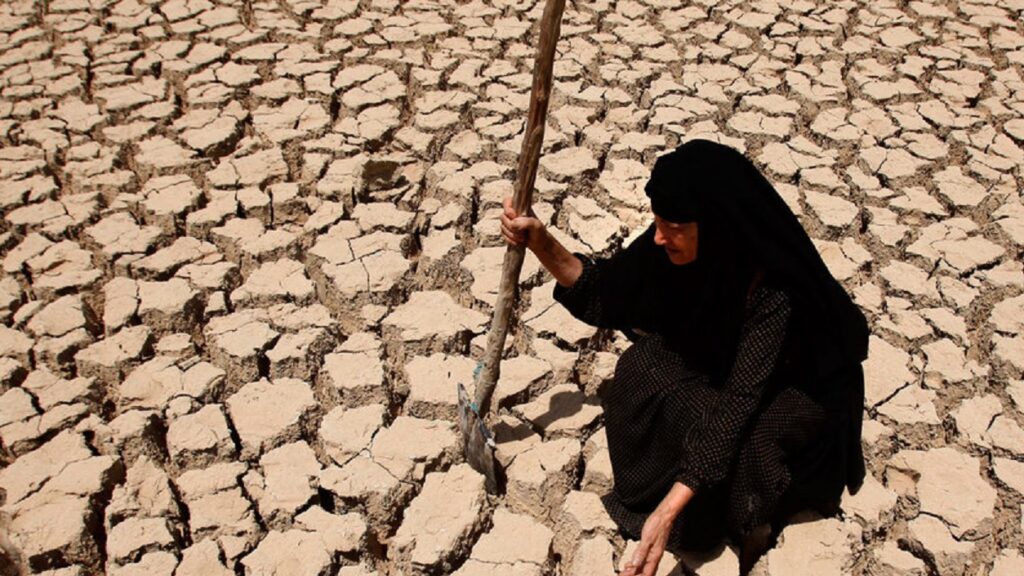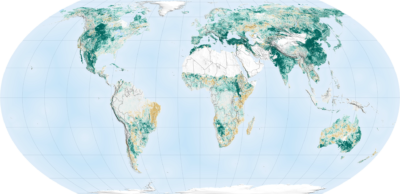I present this information as "observation" rather than "warning". There is too much fear-mongering on the internet. It is like the little boy who calls "wolf".
Groundwater depletion

Pulling more water out of the ground than naturally replenishes causes the water table to drop. Bore-holes must be redrilled or cavitation will damage impeller blades in the pumps. More energy must be expended to pump the water out of the ground as it must overcome more static head. The collapsing ground slows diffusion of the water into the bore-hole since the ground has lower permeability after being abused.

(Western) India, Pakistan and Iran are in the worst shape for groundwater depletion.

Specifically referring to western India, the main driver has been switching from corn (maize) to rice. If you look at conversion rations, corn typically returns 50% more grain per unit of water used. Worldwide, rice has typical conversion rates of 0.07%-to-0.12% kg of grain per kg of water applied. Corn has conversion rates between 0.12%-to-0.17%. In a good year, in many locations, corn might require NO supplemental irrigation or only require irrigation when the corn is pollinating.
Three market forces are moving farmers to plant more rice.
- Human consumers prefer rice to corn and are willing to pay a higher price.
- The availability of electricity and/or diesel and solar power makes pumping more efficient and more cost effective
- Diesel tractors are replacing traction-animals. The availability of diesel power makes the secondary use of corn stover as animal feed less valuable. Rice straw is of very little value as animal feed but that is now a non-issue.
One response to groundwater depletion and the increasing cost of pumping water is to increase the conversion ratio by fertilizing. However, excessive fertilizer has the potential of degrading the quality of groundwater and surface runoff and making it un-drinkable.
In the western-hemisphere the California central valley, Salton Sea and Western Mexico are areas of concern. Groundwater extraction in the high-plains is offset by robust recharge rates.
CO2

Green areas showed net increase in photosynthesis between the years 2000 and 2017. Attributed to increased CO2 in atmosphere. SOURCE
According to the article that is the source of this graphic:
This global greening is seen most dramatically — and with the greatest impact on ecosystems and the lives of people dependent on them — in drylands. It is not happening in all arid regions. Some places are browning. But not many.
There are also concerns that the greening of wild vegetation in arid areas means that less water will infiltrate and recharge ground-water reserves that are used for agriculture.
Upland rice grows similar to corn and other vegetables, and does not need to be irrigated/flooded like lowland rice. I've grown it in my garden in EastTN. It's actually pretty drought tolerant, more so than the hybrid sweetcorn varieties I grow.
ReplyDeleteTraditional agricultural practices existed for a reason The market and modern technology has skewed that.
ReplyDeleteWater is one of those things I have become increasingly conscious of and even worried about as the years have gone by. We put up cities in deserts and somehow are surprised that water is an issue.
According to some who know more than I, the underground water found in the Texas RGV has become saline due to heavy water irrigation pumping. A shame as the water table is often within 20 feet of grade. So if you plan to live or use that water distillation is one possible solution.
ReplyDeletePlace floating mats to grow rice in reservoirs. This would also reduce evaporation. For harvest, pass the mats through threshers mounted on self propelled barge.
ReplyDelete